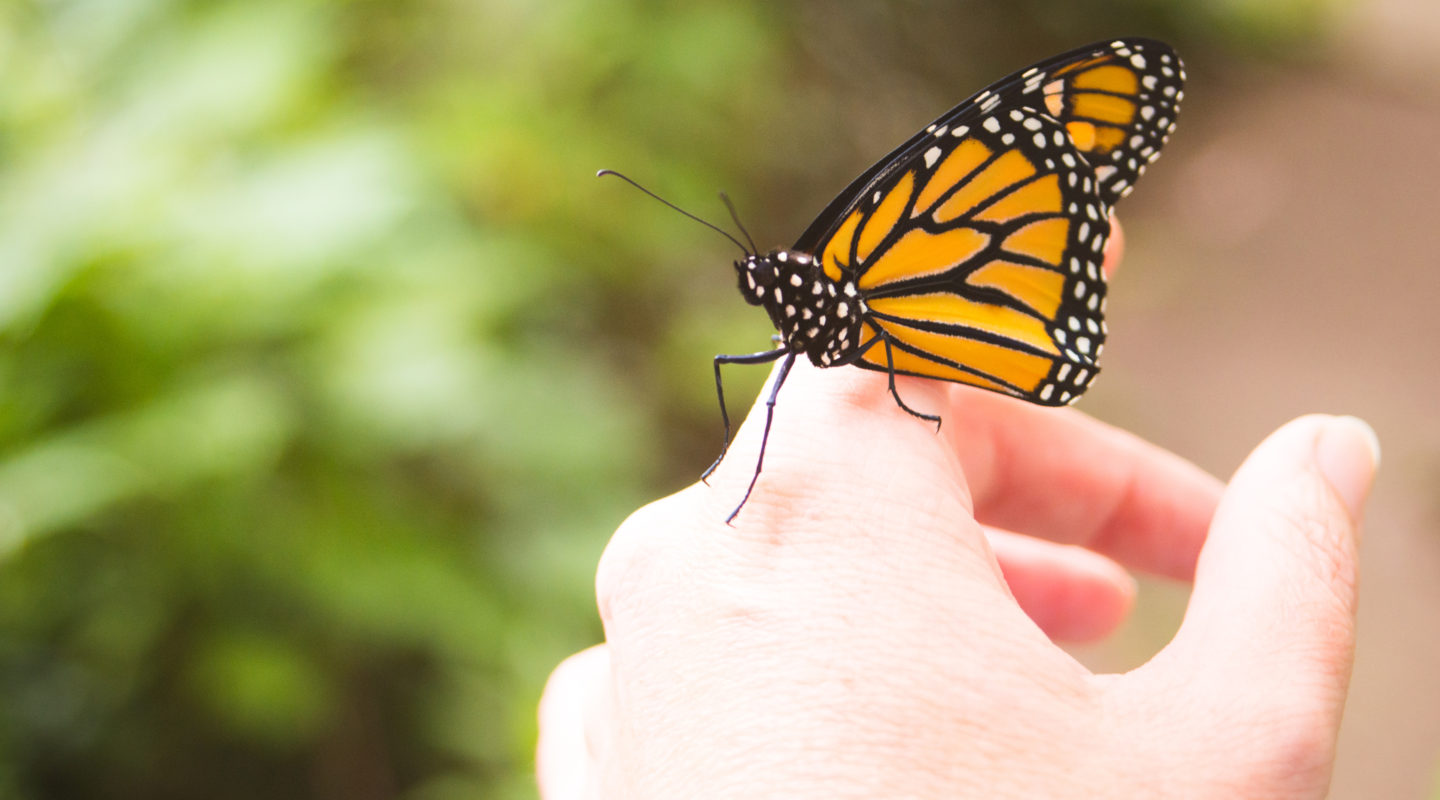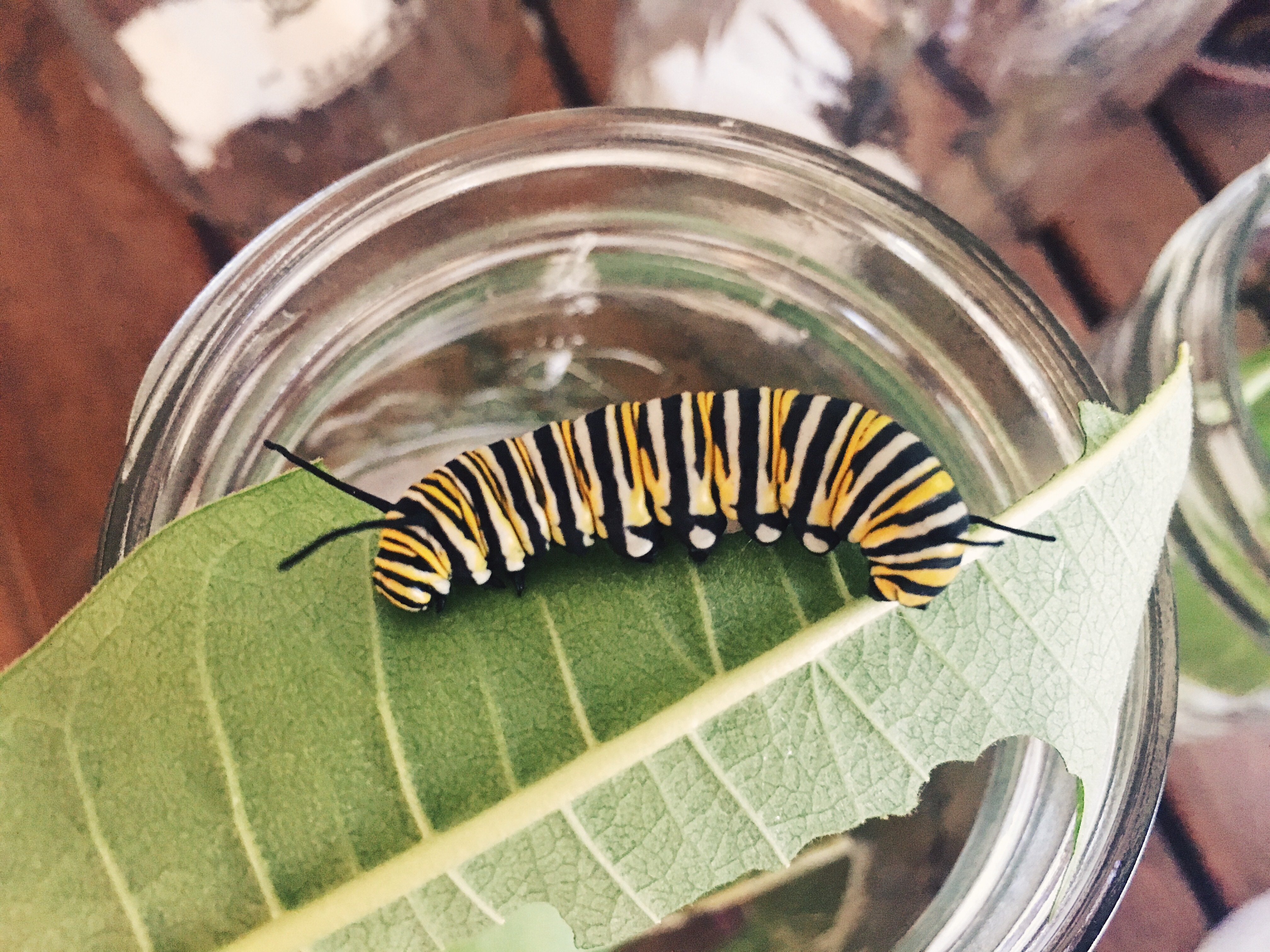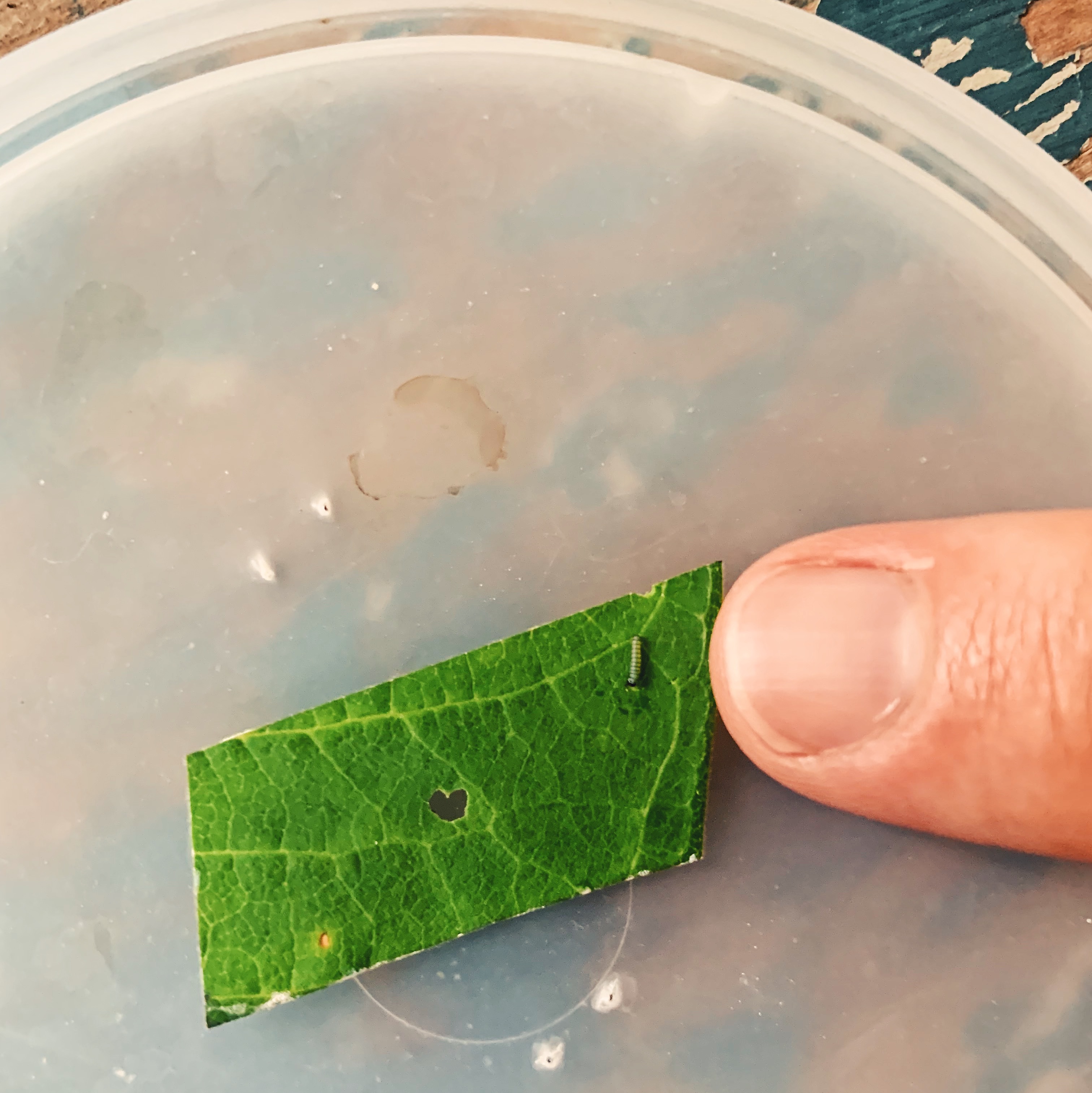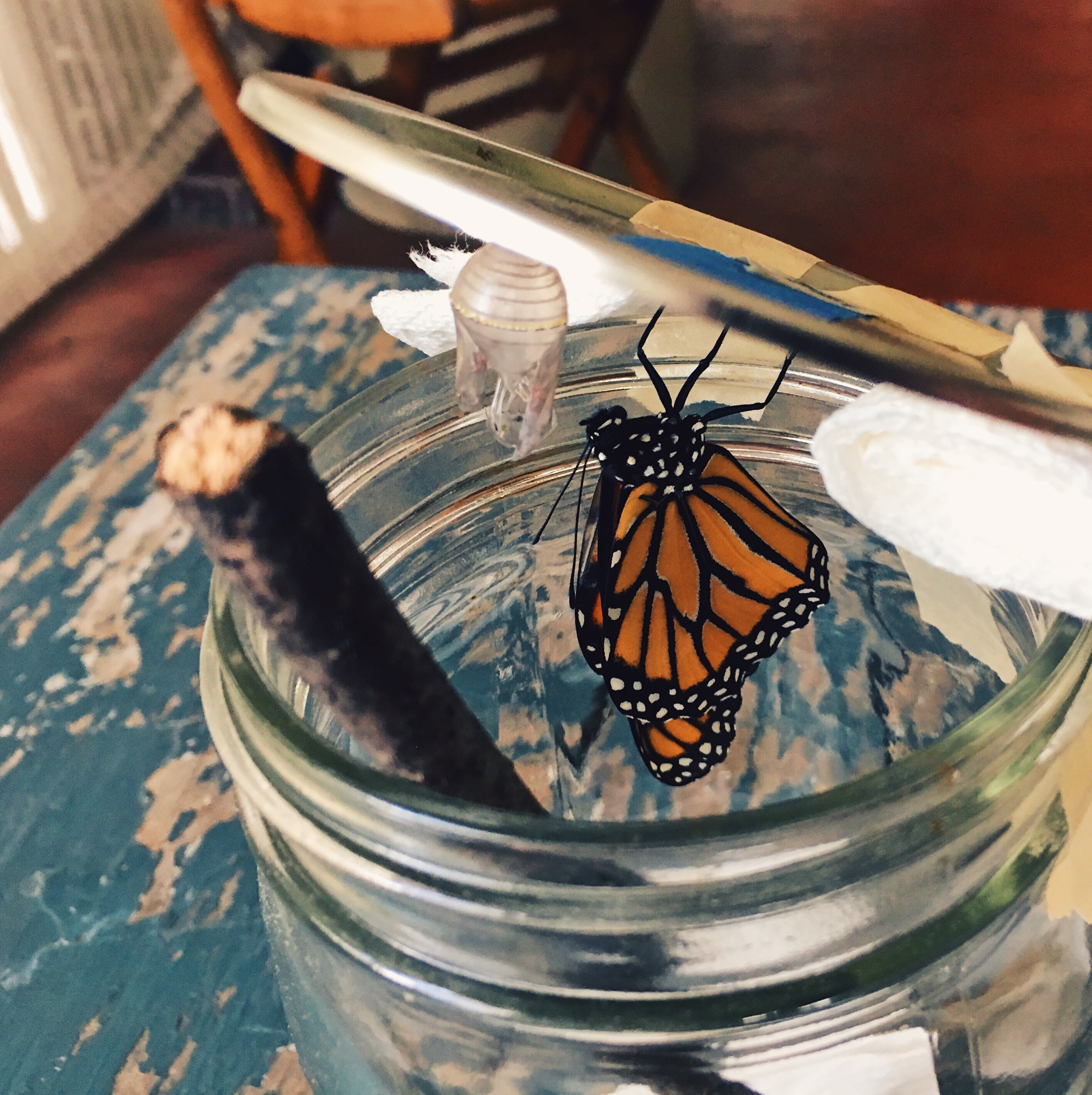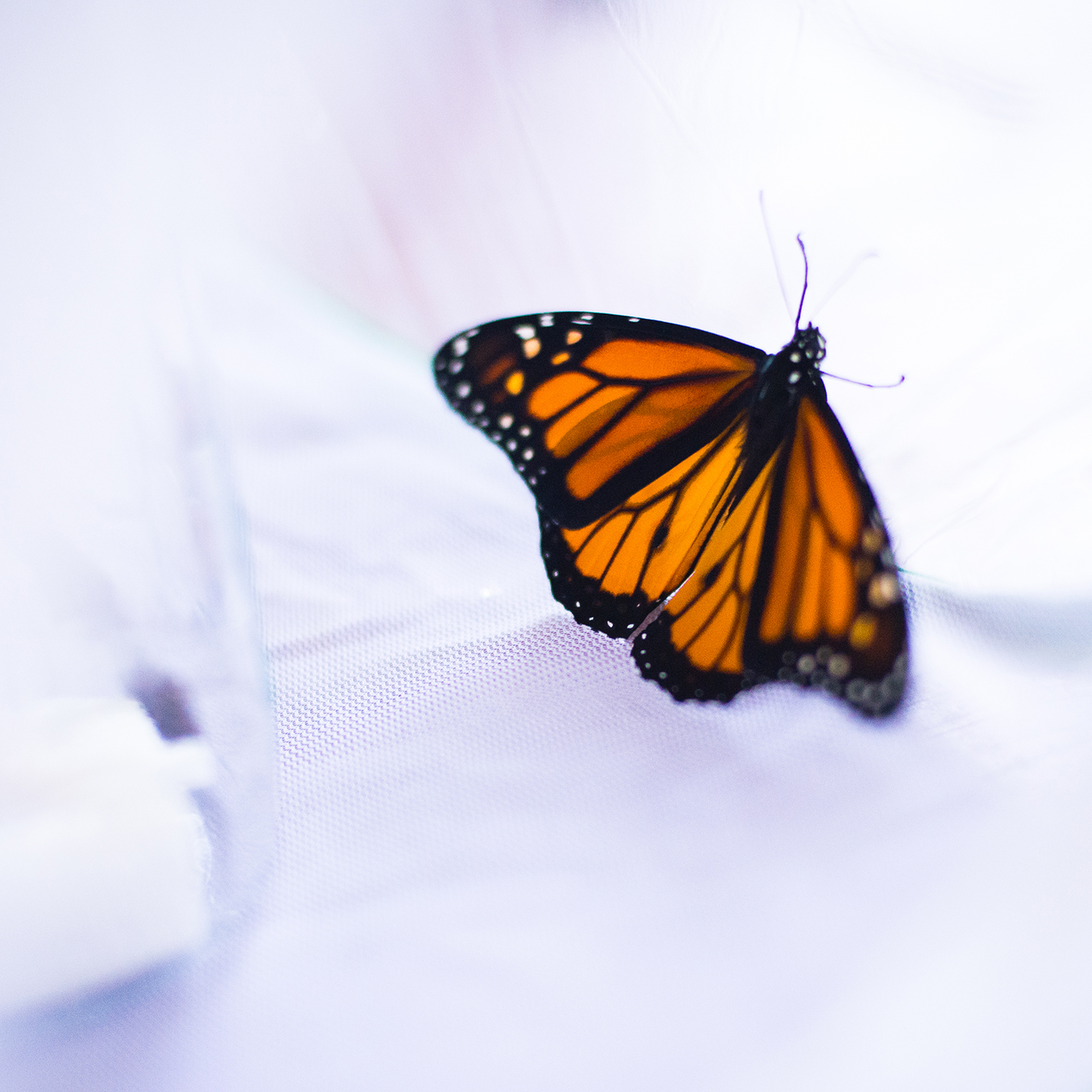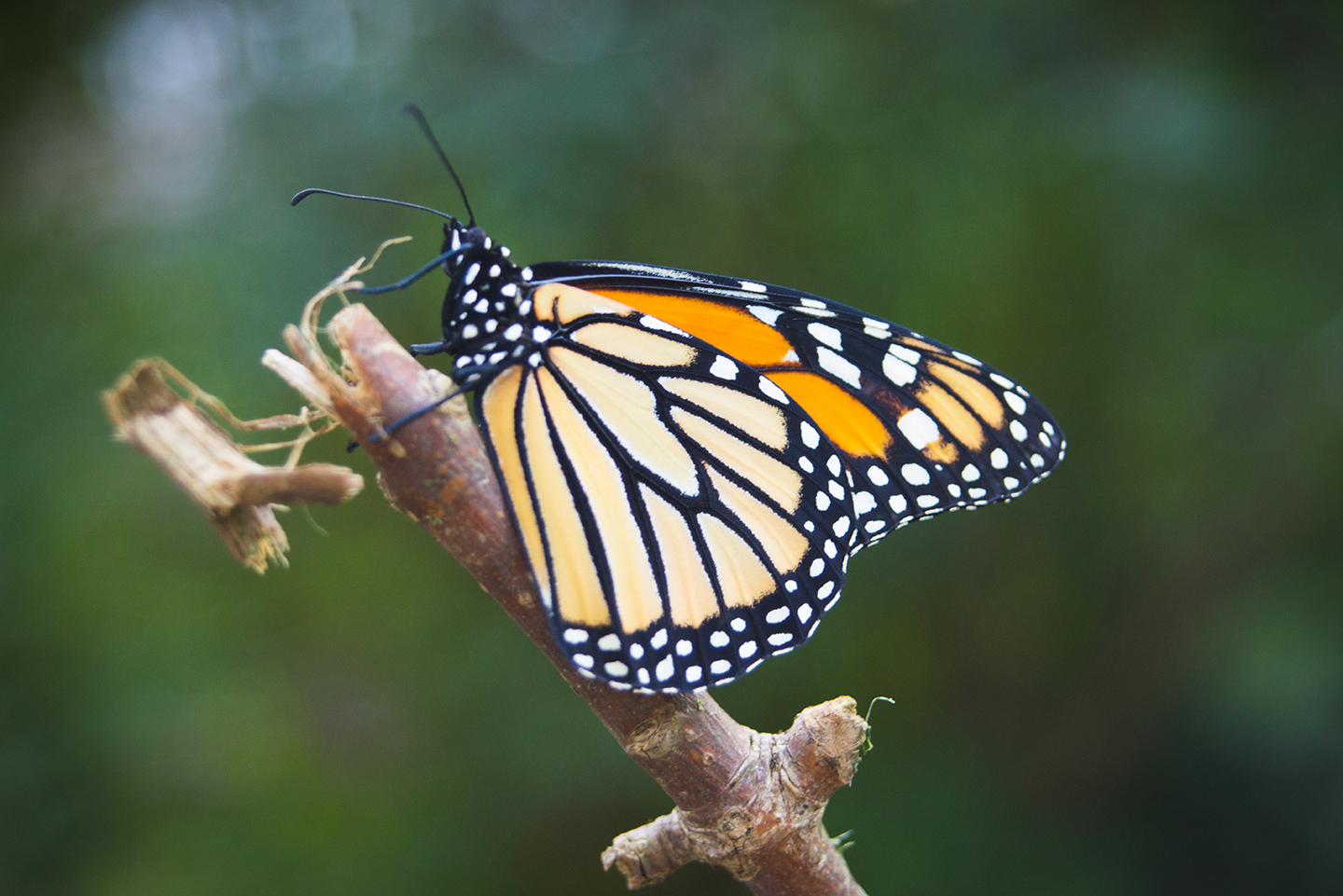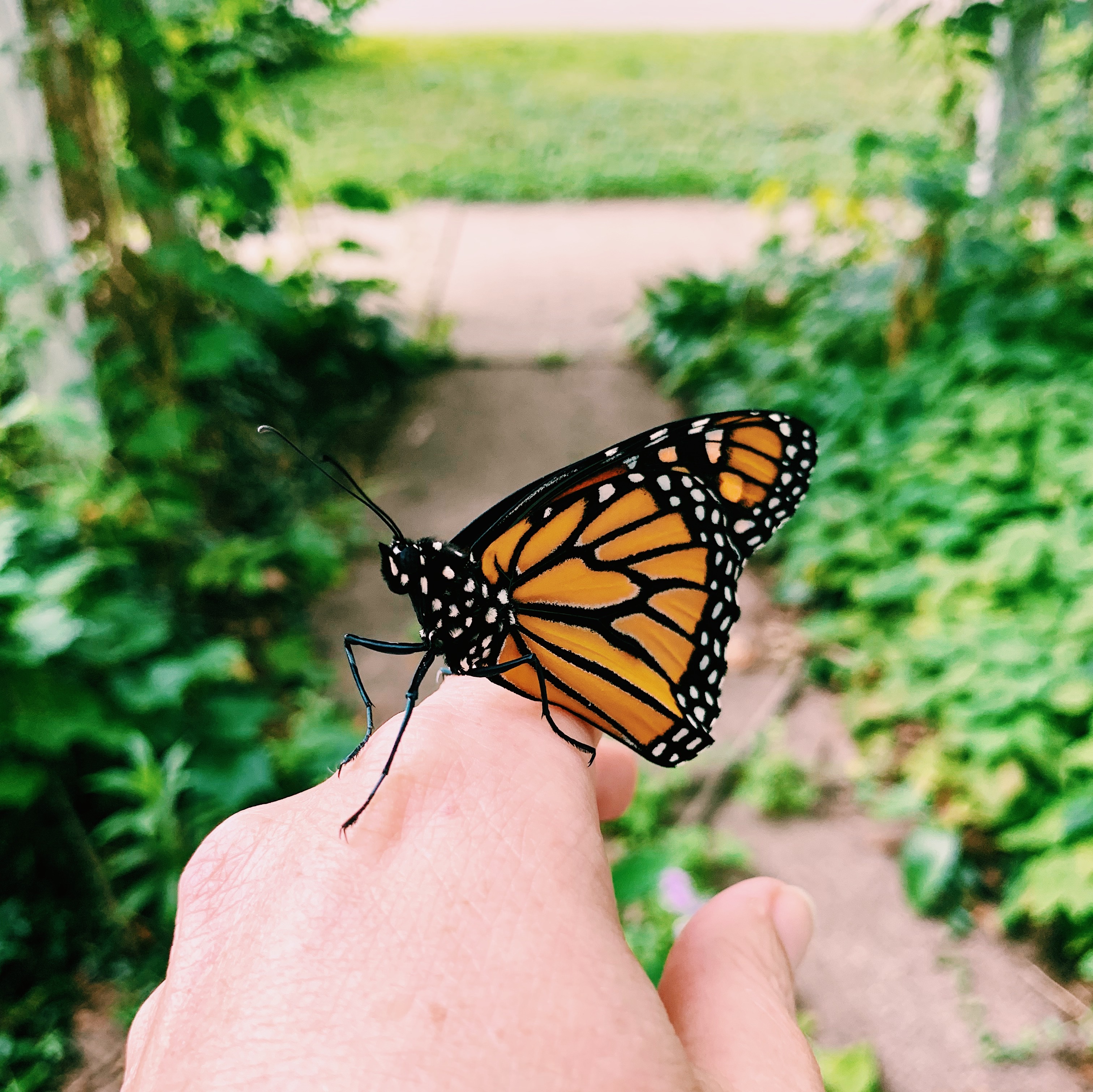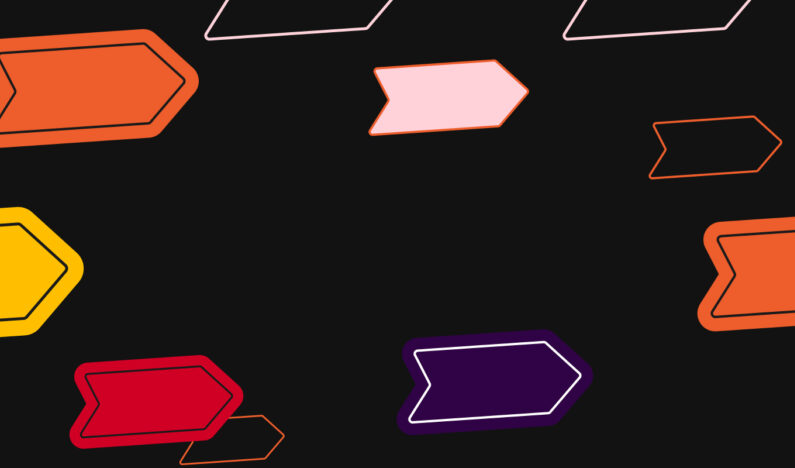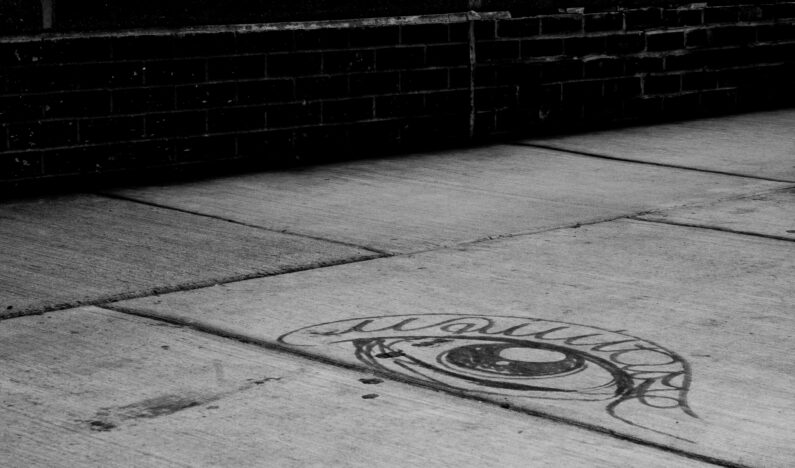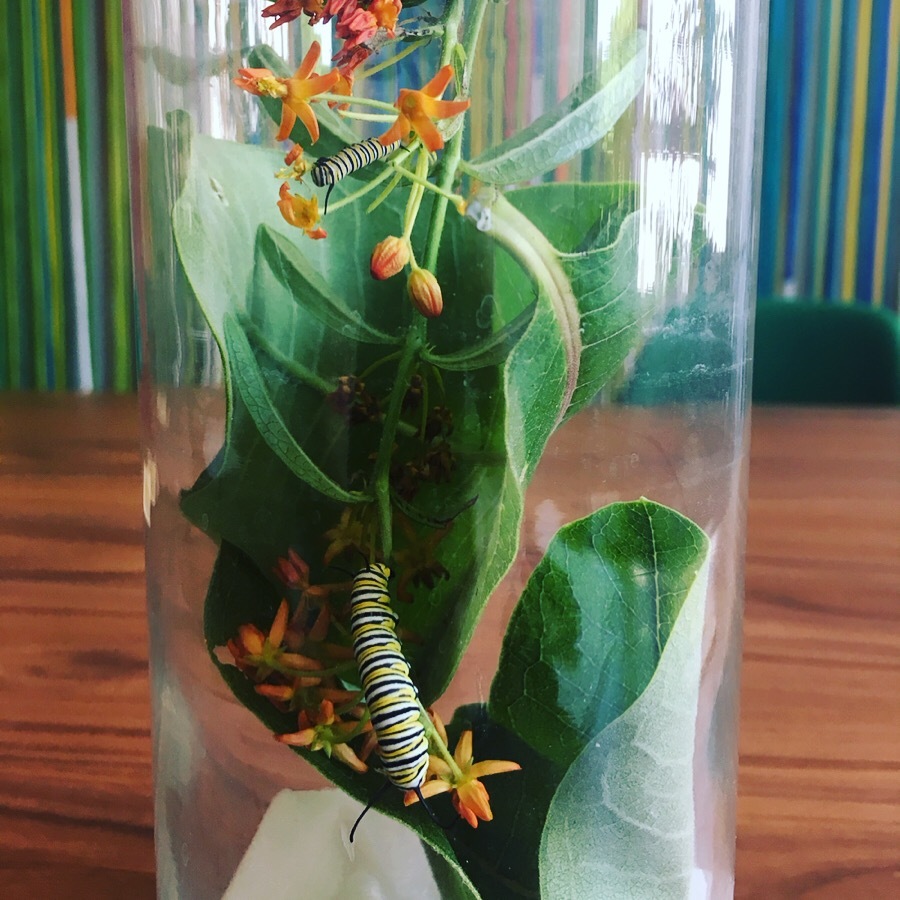
Earlier this summer Cricket brought some flowers from her garden to the studio, as she often does. While eating lunch, Tessa noticed that some caterpillars had hitchhiked aboard some milkweed. I’ve never seen a monarch caterpillar in real life, but have a few friends who raise and release them each year. So through the connection of social media, I felt pretty confident I could mother these little dudes along. We gave them a habitat (aka stuck them in a jar) and I gathered milkweed for them each day, just like a good elementary school student. They grew fast, and in a few days made the big change to chrysalis. Then, 10 days later, they emerged in completely different forms as monarch butterflies.
It became my summer project — my butterfly summer. As I gathered more milkweed, I found more caterpillars. Some teeny tiny, some larger. I even found an egg that I hatched! Watching the weirdness of metamorphosis has really had an impact on me. It’s nothing short of magic. Of course there are scientific explanations, but really? MAGIC. After growing to a certain size, the caterpillars spin a little web of silk and attach themselves upside down, then split open and change into their chrysalis, which is dotted with gold flecks. Then they liquify, and rearrange themselves into a completely different thing. A little while before emerging, the chrysalis turns clear and you can see their wings folded up inside. There are even studies that have concluded that butterflies can remember things from when they were caterpillars, and I’m pretty sure some of those butterflies recognized me after they emerged — I had a number of special hang sessions with some of them before they fluttered off on their adventures.
Rest and reflection is important to our work as well. It can help a project morph into its best self. As an example, we’ve been working on a website redesign in-house, which launched around the time of the first caterpillars. We knew it was a major improvement over the previous iteration, but by letting it rest for a little while, looking at analytics, and getting user feedback, we determined that it needed more change. We reorganized the way users access our work, removed redundancies that took some time to realize were there, and beefed up and stripped away certain areas of the site that the data told us needed to work better. We launched the site a few weeks later — morphed into the new, improved version of our digital selves.
Like a caterpillar, the design process sometimes needs some quiet time — some navel gazing — to change and emerge in the world as a monarch.
